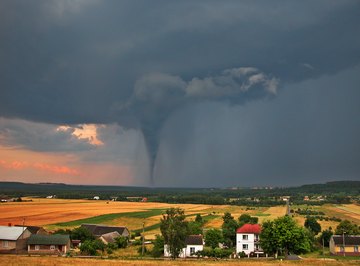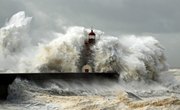
Tornadoes occur worldwide but they are a frequent occurrence in the United States, destroying property and wildlife and sometimes killing people. Tornadoes cover relatively small areas compared with hurricanes or severe winter storms, but the damage is often more severe causing deaths and damage to nature and property. The immediate damage to homes in both suburban and rural areas, caused by the tornado’s violently rotating column of air, is immediately apparent after the tornado has passed but its affect on nature is often not as obvious.
Asbestos Debris
One of the most dangerous man-made materials that becomes a hazard after a tornado is asbestos. Tornado destruction of homes and garden sheds built from asbestos results in large amounts of asbestos being deposited on the ground and in the atmosphere. This is a highly toxic material to humans, and it can also be a hazard to nature creating toxic levels of asbestos in the soil, threatening native animals and poisoning their habitat and water supply. Tornadoes can spread asbestos over great distances, breaking it into small pieces that are difficult to locate for cleanup purposes.
Household Hazardous Waste
After a tornado has destroyed homes in an area, there is an immediate danger from hazardous household cleaning products, automotive products, insecticides and herbicides and workshop supplies like paint and paint strippers. These hazardous materials and chemicals become exposed during the destruction of urban areas and thereby become a hazard to native animals and plants in the area. They can contaminate the water and the soil, making it a toxic environment.
Flash Flooding
Flash flooding is the No. 1 cause of death associated with thunderstorms and the aftermath of tornadoes. The damage to nature from flash flooding is also apparent, destroying animal habitats and food supply and spreading hazardous materials and chemicals into the habitats of native animals and birds. After a tornado there is a huge amount of household and industrial waste washed into the stormwater drains, rivers and lakes, which affect the fauna and flora of the area for years to come.
Forest and Bush Fires
Many fires in the western United States and Alaska are started by lightning strikes occurring before, during or after tornados. Fires in forests and parklands can be devastating for native animals and plants in the area, destroying their natural habitat, which can take several seasons to recover.
Lightning
Tornadoes are often accompanied by lightning strikes that can start forest fires, destroy and uproot old growth trees that provide habitat for native animals.
